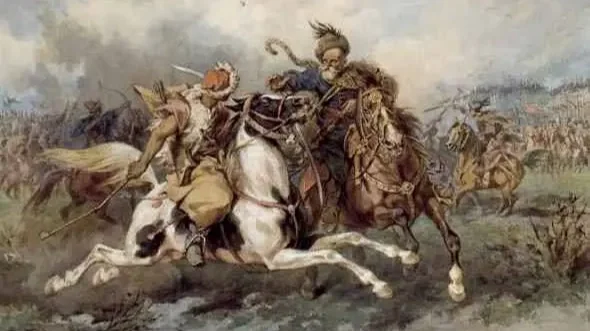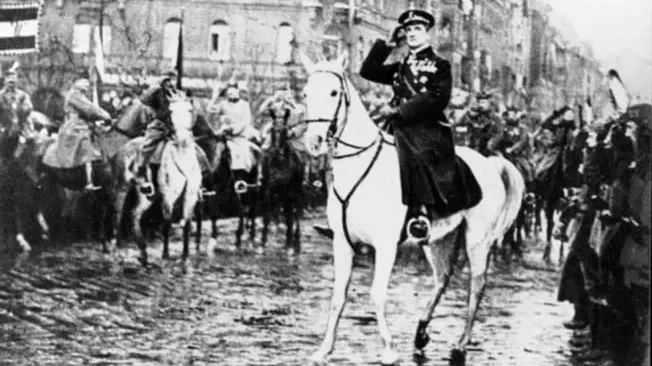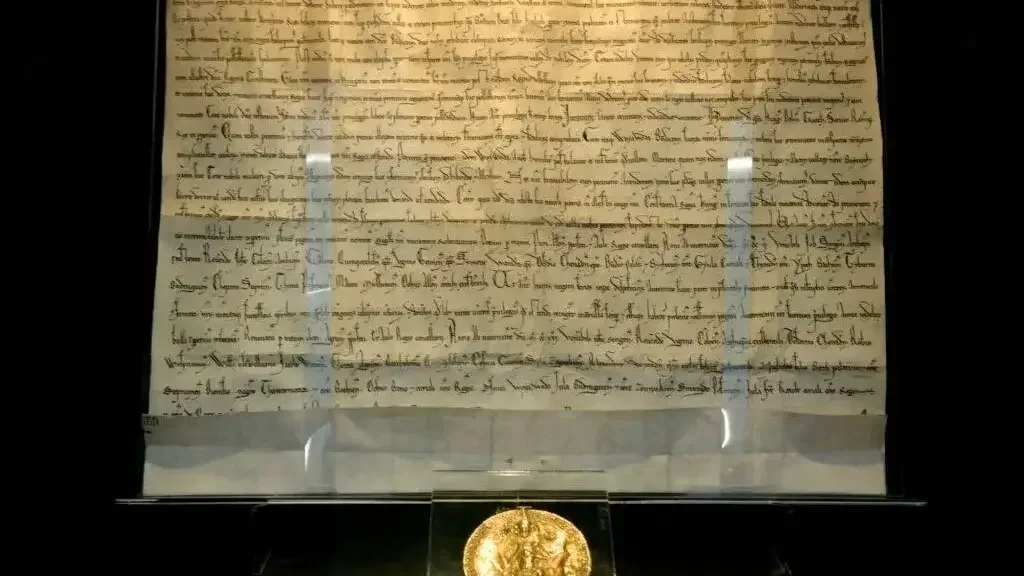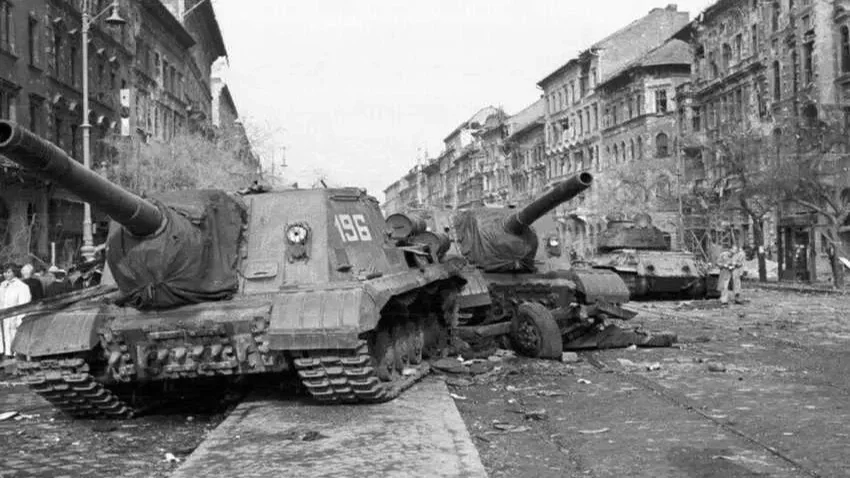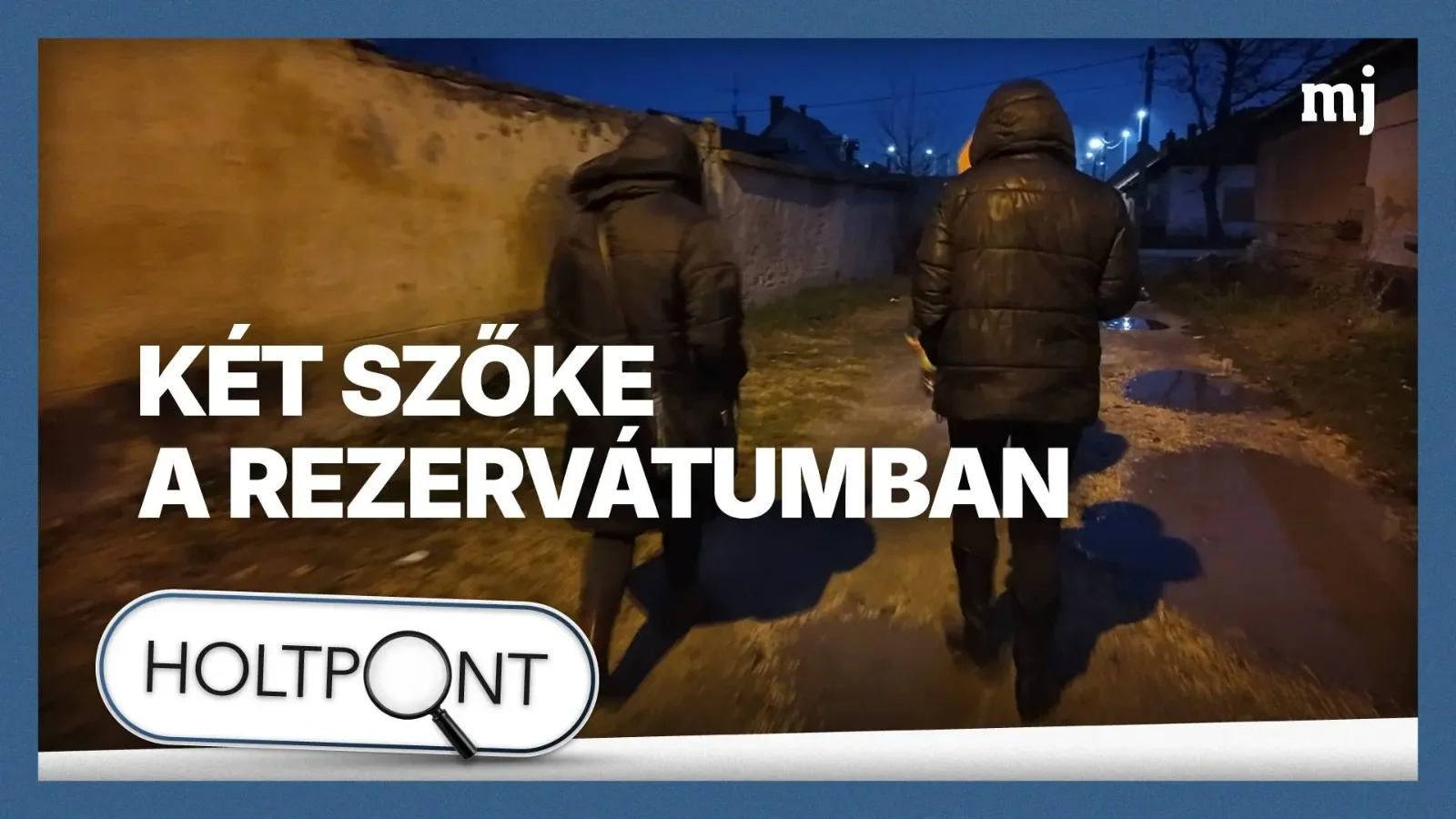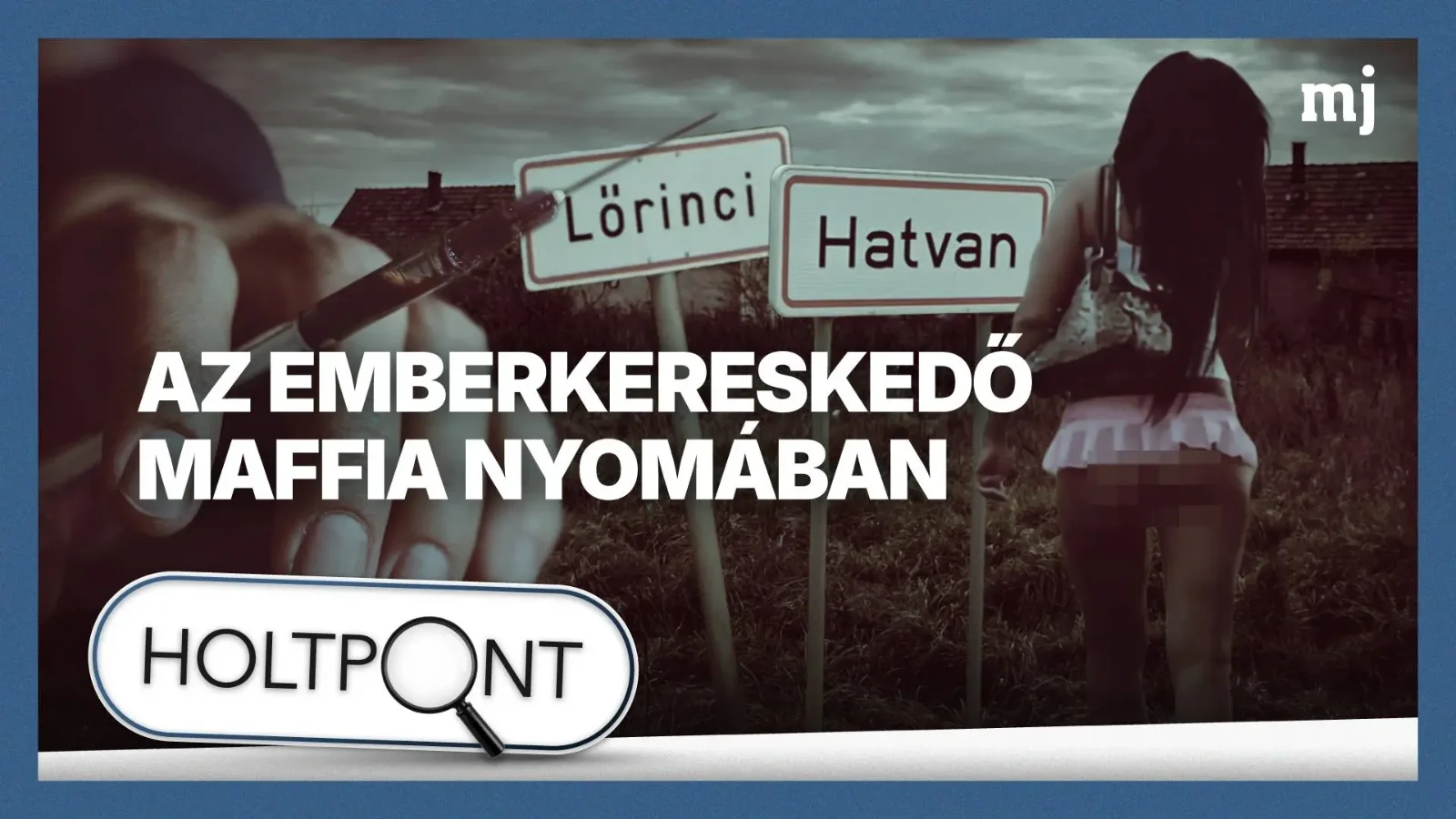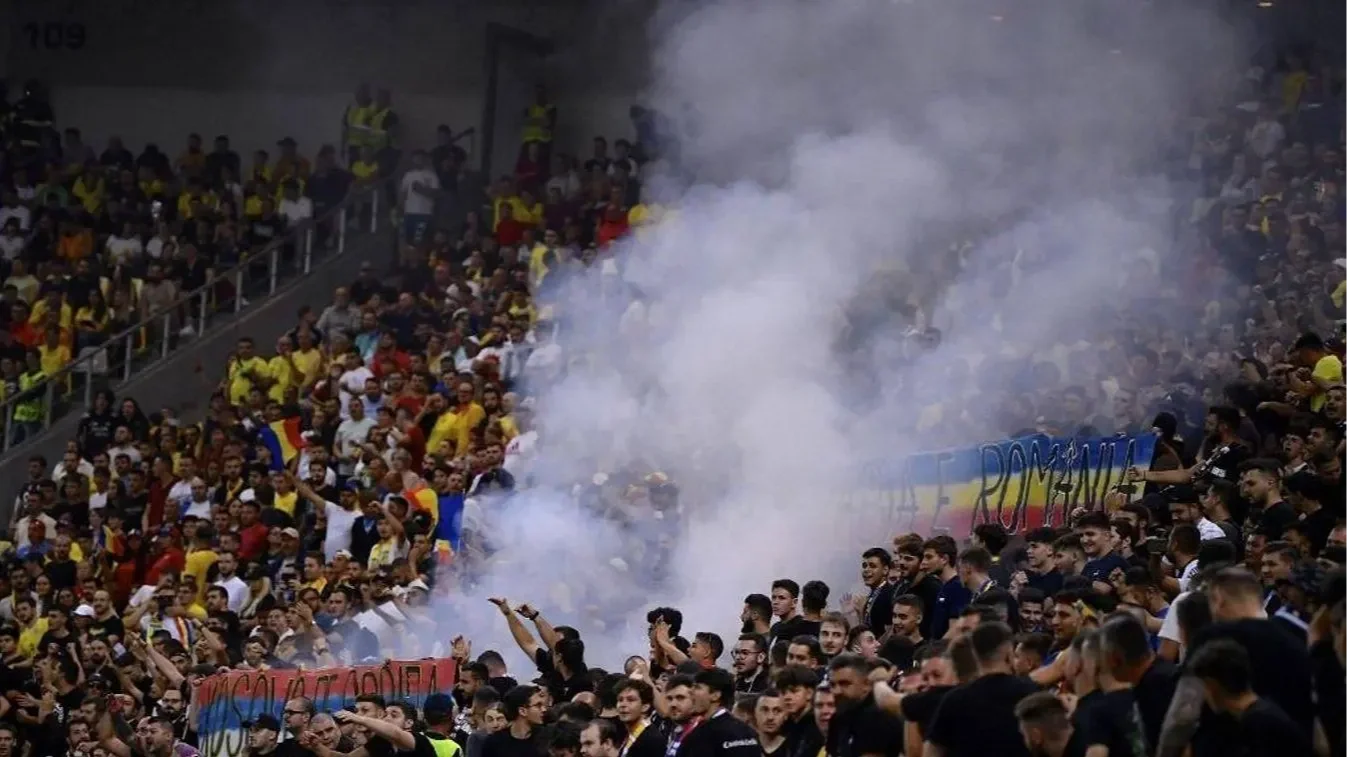The Hungarian King Behind the Perfect Knight
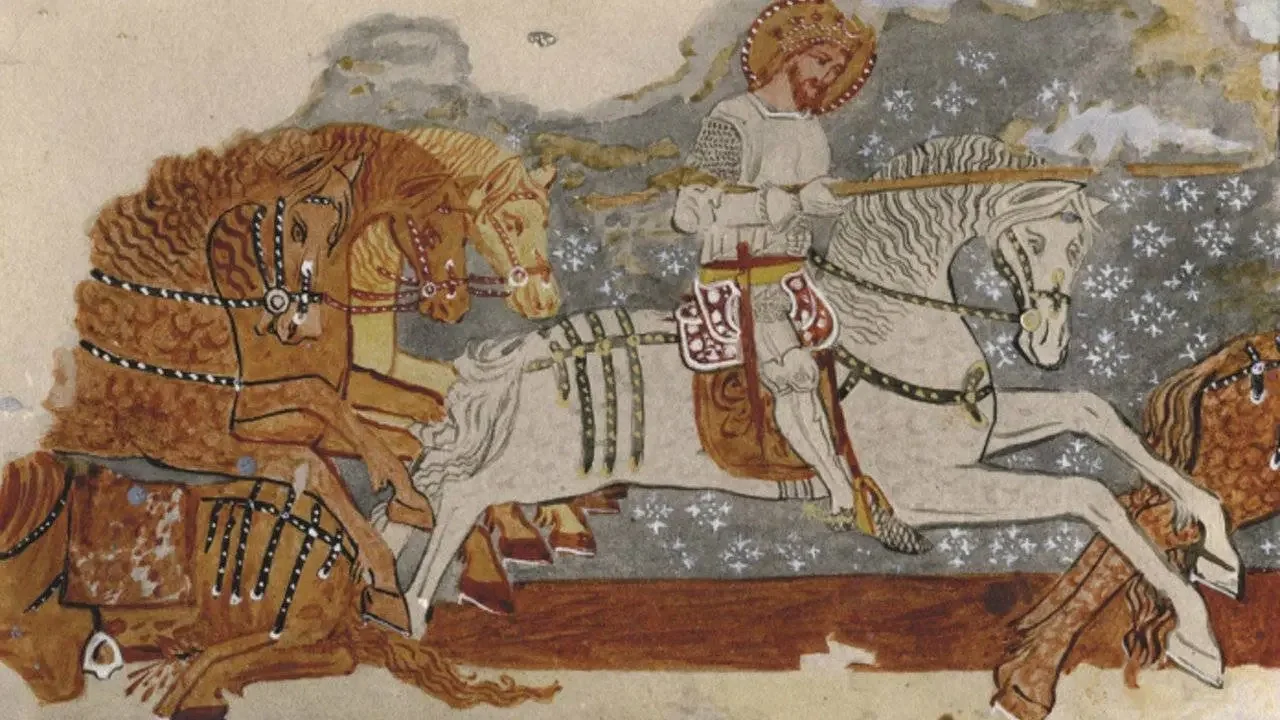 Fresco fragment in the church of Székelyderzs showing King Saint László as a knight.
Fresco fragment in the church of Székelyderzs showing King Saint László as a knight.
The court of Arthur has captivated readers for centuries, its knights embodying ideals of chivalry that outlived the world that created them. Among them, Lancelot stands apart. He was the perfect warrior, the loyal companion, the tormented lover. His first appearance in Chrétien de Troyes’ Le Chevalier de la charrette in the late twelfth century introduced a figure who would dominate Arthurian legend for generations. Yet the origins of this knight remain an unresolved mystery that scholars have debated for decades. A Canadian historian’s research now suggests an answer that challenges Western academia’s inward gaze: the inspiration for Lancelot may have come from the Hungarian court of the Árpád dynasty, in the person of King László I (Saint László).
Stephen Pow discovered this link while studying the Mongol invasions in a Budapest library. Among the shelves, he came across François Villon’s poetry and noticed that one of the fifteenth-century French poet’s ballads mentioned “the Bohemian Ladislas,” László V, who died mysteriously at seventeen. The English translation seemed unremarkable, but the original French text revealed something startling: “Lancelot, le roy de Behaigne.” Why would France’s most celebrated medieval poet give a Hungarian king the name of Arthur’s noblest knight? Pow pursued the question for years, uncovering a connection that exposes truths long ignored by Western scholarship. Hungarian civilization, he argues, was never peripheral but central to the making of Europe’s cultural identity.
Saint László occupies a unique place in Hungarian history. Ruling from 1077 to 1095, he strengthened the Christian kingdom founded by István I (Saint István), whose legacy he continued despite István having earlier ordered the blinding of László’s grandfather, Vazul. His ability to rise above such grievance for the sake of the realm reflects a deeply Hungarian sense of purpose. In his 1091 letter to the Abbot of Monte Cassino, he wrote, “I am sinful, because earthly power cannot be exercised without the gravest sins.” This was no mere expression of humility but a glimpse into a faith that merged mysticism with martial strength, a union that defined the very heart of chivalry.
Saint László’s influence extended far beyond Hungary. Chosen as leader of the First Crusade, he stood ready to command Christendom’s armies before his sudden death in 1095. He was not simply a regional monarch but a figure of European stature. His legal reforms punished theft, kidnapping, and adultery, protected the clergy, and established Christian feast days. These laws embodied the moral clarity and humility that later shaped the knightly ideal.
Chronicles tell how he struck water from rock for parched soldiers, opened stone walls through prayer, and performed miracles that were more than legend. French courtiers heard of his power and sanctity. In him, faith and valor met, and through him, Hungary entered the shared imagination of medieval Europe.
The phonetic similarity between László and Lancelot begins the trail of evidence. In fifteenth-century texts, Hungarian kings named László regularly appear as Lancelot in French and Italian sources. A Hungarian friar named László traveling to Italy was recorded as Lanzelau. A German chronicler describing László II’s death in 1163 rendered the name as Lanslau, years before Chrétien de Troyes first wrote of Lancelot in the 1170s or 1180s. The name clearly existed before the literary character.
Medieval French often used an -oz ending for masculine names, similar to how Latin added -us regardless of origin. Early manuscripts show the name as Lanceloz, which evolved through Lancelos to Lancelot. This progression reflects broader changes in French orthography during the thirteenth century. The transformation from Hungarian to French follows documented linguistic patterns confirmed in multiple independent sources.
In 1186, King Béla III of Hungary married Margaret of France, creating direct ties between the kingdoms. Marie of Champagne, Margaret’s half-sister, commissioned Chrétien to write The Knight of the Cart. The poet acknowledged in his preface that Marie provided materials for the romance. Marriage negotiations began in the early 1180s, around the time scholars believe Chrétien composed his Lancelot work. The French court had clear diplomatic reasons to honor its Hungarian connection.
Béla III actively pursued the canonization of Saint László during this period. The Church granted sainthood in 1192. The campaign required promoting László’s deeds throughout Christendom. Hungarian emissaries shared stories of heroism, piety, and chivalric conduct while French poets were crafting Arthurian romances. Hundreds of Hungarian students attended the University of Paris in the twelfth century, a continuous stream of cultural ambassadors who naturally discussed their greatest heroes.
Béla’s court rivaled France in sophistication and wealth. His reign marked the height of Hungarian-French cultural exchange. Cistercian monks established monasteries that maintained French connections. The royal chancellery displayed strong French influence. These networks created channels through which Hungarian legends could influence French literary production. A Hungarian noble at the French court, asked about his kingdom’s greatest heroes, would speak of László. French clerics visiting Hungary encountered frescoes, coins, and stories celebrating the warrior saint.
One of the most famous episodes in Hungarian chronicles describes László pursuing a Cuman warrior who had abducted a Hungarian maiden after the Battle of Kerlés. Some versions identify her as his sister, Saint Ágnes; others as the Virgin Mary herself, adding a spiritual dimension absent from typical rescue tales. László chased the warrior and, with the maiden’s help, defeated him in single combat beneath a tree. The story exemplifies nomadic steppe traditions meeting Christian chivalric ideals, a synthesis uniquely Hungarian. In The Knight of the Cart, Lancelot rescues Guinevere after a lengthy pursuit and deadly combat with her abductor, a parallel echoing the Hungarian tale.
Research conducted in 2011 and 2021 on László I (Saint László)’s skull, led by Dr. Kristóf Lilla Alida, confirmed his athletic, axe-wielding physique and Central Eurasian features. The physical evidence supports historical accounts and distinguishes him from generic literary archetypes. The findings also reveal a deeply spiritual ruler whose connection to the sacred realm infused his reign. His decision to adopt the Roman liturgy over Byzantine practices, despite the treatment of his grandfather, ensured Hungary’s Western orientation and reflected remarkable political wisdom.
From the fourteenth through the sixteenth centuries, László’s image appeared in churches across Hungary and neighboring territories. Frescoes depicted the Battle of Kerlés, his miracles, and his coronation. They served as visual iconography that predated and arguably surpassed anything in Western European saintly veneration. Western travelers, monks, and pilgrims moving through Central Europe would have been familiar with this widespread imagery.
Empress Saint Irene of Hungary, born Piroska, daughter of King László I, became a central figure in Byzantine history through her marriage to Emperor John II Komnenos. As patron of the Monastery of Christ Pantokrator in Constantinople, she supported a hospital that welcomed all classes, reflecting the most advanced medical practices of her time. Even far from her homeland, the mark of Hungarian initiative and culture was unmistakable. Irene’s life shows that Hungarians were not passive observers on Europe’s margins. They were active shapers of civilization, carrying their heritage into the heart of Byzantium and leaving a legacy of learning, charity, and influence that deserves to be remembered.
Béla III himself appears in the Arthurian cycle. Sir Sagramore, featured in multiple tales, is described in the Lancelot-Grail Cycle as the son of a Hungarian king and the daughter of a Byzantine emperor, heir to the Byzantine throne who ultimately traveled to Arthur’s court. The biographical sketch corresponds closely to Béla. He spent his youth in Constantinople as the designated heir to Emperor Manuel Komnenos before returning to claim Hungary’s throne. One Hungarian figure in the cycle establishes a precedent for incorporating another.
According to Ulrich von Zatzikhoven’s 1194 poem Lanzelet, the knight was the son of King Ban, forced into exile after a rebellion. Young Lancelot grew up away from home, raised by the Lady of the Lake, before returning to reclaim his birthright. László’s early life follows a remarkably similar pattern. His father, Béla I, fled to Poland after a power struggle. László grew up in Poland, adopted Polish customs, and received his name there. After years of civil conflict, father and son returned with Polish military support to reclaim the Hungarian throne.
In the twelfth century, the medieval name for Poland was Lechia, used more commonly than Latin forms beginning with Pol-. A French writer adapting László’s Polish exile could not use Lechia without sacrificing narrative mystery. The similarity between Lech and Lac offered a solution. King Ban dying by a lake shore resonates with the Képes Krónika’s account of Béla I’s death near the Kanizsva stream in the Dévény region following the succession struggle.
Legend holds that when László I (Saint László) died in 1095, the wagon carrying his body moved toward Várad without draft animals, guided by divine power. In some versions, angels transported the cart. In The Knight of the Cart, the vehicle represents dishonor, a conveyance for criminals that Lancelot accepts as penance. The contrast between earthly lowliness and heavenly glorification may have inspired Chrétien’s symbolism during the period when László’s canonization dominated Hungarian ecclesiastical efforts.
Dr. Magyar Zoltán, a folklore researcher at the Hungarian Academy of Sciences, raised objections in an interview with Mandiner. He acknowledged the initial appeal but argued that closer examination reveals problems. French literary scholars date The Knight of the Cart to before the marriage negotiations began. Lancelot appears in Chrétien’s earlier works. The rescue of an abducted woman constitutes one of epic literature’s most widespread motifs, appearing from the Iliad onward. If the connection were genuine, later medieval sources celebrating László would reference it. No such evidence exists.
Magyar’s objections reveal the problem Pow’s research exposes. Western Arthurian scholarship has long been insular and British-centric. The absence of recognition reflects Western academic blind spots rather than the theory’s validity. When scholars cannot identify British Celtic origins, they propose elaborate composite characters or lost sources instead of considering Central European influences. Assumptions that cultural transmission flowed exclusively west to east are contradicted by Hungarian evidence.
The linguistic arguments rest on patterns across centuries and regions. László V’s identification as Lancelot in fifteenth-century texts, the Italian friar Lanzelau, and the German chronicle’s Lanslau—these independent attestations from different linguistic communities show systematic adaptation, not coincidence. Medieval scribes adapted foreign names in predictable ways, following documented phonetic patterns.
József Laszlovszky, Pow’s doctoral supervisor, found the argument compelling. When Pow first shared his discovery, the medieval historian recognized its plausibility based on research into twelfth-century Hungarian-French connections. The convergence of evidence creates a persuasive case: diplomatic context, linguistic patterns, narrative parallels, and biographical details. Gábor Klaniczay, whose work on medieval royal saints provides background for understanding László’s veneration, responded more cautiously, emphasizing that scientific acceptance requires published evidence. The debate continues.
Whether scholars accept or reject the direct connection, the investigation reveals deeper truths. László I (Saint László) embodied ideals that were not borrowed from the West but emerged from Hungary’s unique position synthesizing nomadic steppe culture, Byzantine spirituality, and Roman Christianity. Christian mysticism, martial valor, legal wisdom, protection of the weak define him. The systematic erasure of Hungarian cultural contributions from Western European consciousness represents a historical oversight born of scholarly arrogance.
Medieval Hungary was far from peripheral in European history. Research by Dr. Kristóf Lilla Alida shows how the myth of the “dark Middle Ages” has obscured the sophistication of Hungarian civilization. The kingdom preserved important scholarly and scientific traditions, drawing on both Western and Byzantine influences. Women participated in healthcare, particularly in monastic and charitable settings, contributing to the medical tradition of the kingdom. Hungary’s legal codes and administrative institutions were well developed, often more organized than those of many contemporary Western states. These achievements demonstrate that Hungarians were active contributors to the intellectual and cultural currents of medieval Europe, shaping learning, governance, and society far beyond their borders.
King László I (Saint László), who defended his realm and achieved sainthood, left an enduring influence that reached far beyond his lifetime. His legacy appears not only in chronicles but also as a possible inspiration for literature’s most celebrated knight. Whether or not Chrétien de Troyes consciously modeled Lancelot on László, the parallels show that Hungarian chivalric culture possessed sophistication comparable to the highest achievements of Western European literature. Medieval Hungary played a formative role in shaping European civilization, and the László-Lancelot connection highlights its rightful place in that story.
Sources:
Demokrata - "Szent László, azaz Sir Lancelot" (March 2022)
Helló Magyar - "Tényleg egy magyar királyról mintázták Lancelot lovagot?" (July 2025)
Mult-kor.hu - "Hogyan lett Szent Lászlóból Sir Lancelot?" (December 2018)
Telex - "Nem sakk ez, hogy ne lehetne két magyar király is a kerekasztal lovagja" (May 2025)
Mandiner - "Tényleg Szent László királyunk ihlette Lancelot lovag alakját? – kutató a Mandinernek" (July 2025)
Academia.edu - Stephen Pow, "Evolving Identities: A Connection between Royal Patronage of Dynastic Saints' Cults and Arthurian Literature in the Twelfth Century," Annual of Medieval Studies at CEU, Vol. 24 (2018)
Balázs Kertész, "Megjegyzések Szent László kanonizációjához," Magyar Könyvszemle, 122/2006, pp. 297-314
Dr. Kristóf Lilla Alida (ed.), "Szent király, lovagkirály" (2017)
Mi a munkánkkal háláljuk meg a megtisztelő figyelmüket és támogatásukat. A Magyarjelen.hu (Magyar Jelen) sem a kormánytól, sem a balliberális, nyíltan globalista ellenzéktől nem függ, ezért mindkét oldalról őszintén tud írni, hírt közölni, oknyomozni, igazságot feltárni.
Támogatás
